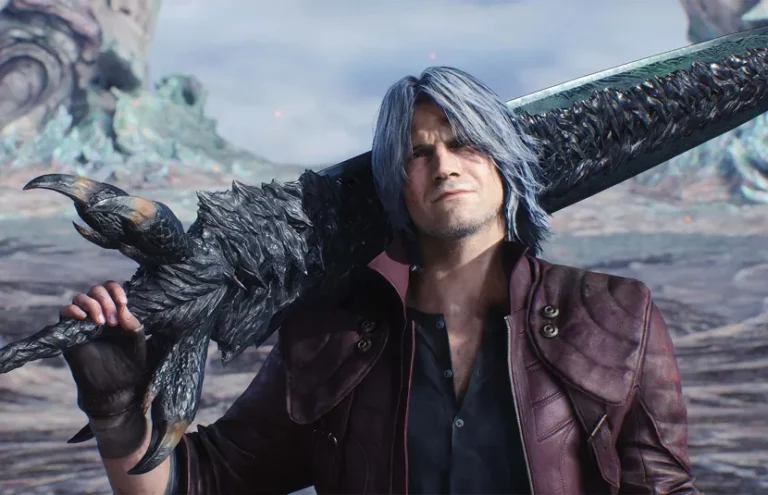Exploring the Garden for the Dead in the God of War Universe

Introduction:
Garden for the Dead in God of War: In the vast and intricate universe of God of War, known for its mythological richness and compelling narratives, one realm that stands out is the enigmatic Garden for the Dead in God of War. This ethereal sanctuary, often shrouded in mystery, plays a pivotal role in the overarching tale of Kratos and Atreus. In this exploration, we’ll delve into the lore, the visual splendor, and the significance of the Garden for the Dead in the God of War series.
The Garden’s Mythological Roots:

At the heart of God of War lies a rich tapestry of mythology, and the Garden for the Dead in God of War is no exception. Drawing inspiration from Norse mythology, this realm serves as a distinct representation of the afterlife, a place where souls find solace after departing the mortal realm. Rooted in the idea of a tranquil resting place for the departed, the Garden is a manifestation of the complex relationships between life, death, and the divine in the God of War universe.
The Enigmatic Deities Within the Garden:
One of the captivating elements of the Garden for the Dead in God of War is the presence of enigmatic deities and spirits that dwell within its sacred confines. These beings, intricately tied to Norse mythology, offer guidance and challenge and sometimes hinder Kratos and Atreus on their journey. The interactions with these entities provide players with glimpses into the complex dynamics of the godly realms, offering a unique perspective on divine beings in the God of War universe.
The Seasons of the Garden:

The Garden for the Dead in God of War is not a static environment but rather undergoes dynamic changes mirroring the cyclical nature of life, death, and rebirth. The shifting seasons within the realm symbolize the ebb and flow of existence, presenting players with varying challenges and visual spectacles. The careful attention to detail in depicting the changing seasons adds a layer of realism and depth to the game, immersing players further into the fantastical world of God of War.
The Garden as a Reflection of Kratos’ Journey:
As Kratos traverses the Garden for the Dead in God of War, players witness a subtle but powerful reflection of the protagonist’s journey. The realm serves as a symbolic landscape, echoing the themes of redemption, atonement, and the cyclical nature of violence that Kratos grapples with. The juxtaposition of life and death within the Garden mirrors the internal conflicts of its Spartan protagonist, creating a poignant narrative connection between character and environment.
Cultural Influences and Artistic Inspiration:
Santa Monica Studio’s dedication to cultural authenticity and artistic inspiration is evident in the design of the Garden for the Dead. The visual elements draw from Norse mythology and real-world cultural motifs, seamlessly blending fantastical elements with historical and cultural influences. This synthesis not only enriches the gaming experience but also pays homage to the depth and diversity of the mythologies that inspire God of War.
Mysteries and Unexplored Depths:
Despite the revelations and discoveries made within the Garden for the Dead in God of War, the realm remains steeped in mysteries and unexplored depths. The intentional ambiguity and unanswered questions contribute to the game’s allure, encouraging players to engage in discussions, theories, and speculations about the untold stories and hidden secrets that may lie concealed within its verdant landscapes.
Cinematic Storytelling:

God of War is renowned for its cinematic storytelling, and the Garden for the Dead in God of War is no exception. The narrative unfolds seamlessly through a combination of awe-inspiring visuals, poignant character interactions, and emotionally resonant storytelling. The realm becomes a stage for the symphony of game design, narrative direction, and artistic vision, showcasing the capabilities of modern gaming as an immersive storytelling medium.
Player Choices and Consequences:
The Garden for the Dead in God of War incorporates an element of player agency, where decisions made within its boundaries have consequences that ripple throughout the game. The choices players make, both in terms of narrative decisions and strategic gameplay, shape the outcome of events within the realm and, consequently, the trajectory of the overarching God of War storyline. This interactive storytelling element adds layers of complexity and replay value to the game.
Crossover of Mythologies:
While Norse mythology takes center stage in God of War, the Garden for the Dead in God of War introduces an intriguing crossover of mythologies. Elements from other mythic traditions subtly weave into the narrative, creating a tapestry of diverse influences that enrich the gaming experience. This approach not only demonstrates the creative liberties taken by the developers but also invites players to explore the intersections of different cultural and mythological narratives.
Community Engagement and Easter Eggs:
The God of War community actively engages in unraveling the mysteries of the Garden for the Dead in God of War. From dissecting the lore to uncovering Easter eggs and hidden references, players come together to share their findings, theories, and experiences. The sense of community engagement enhances the overall gaming experience, turning the exploration of the Garden into a collective endeavor.
Evolution Across God of War Installments:
As the God of War series progresses, the Garden for the Dead in God of War undergoes transformations that align with the evolution of its characters and the overarching narrative. These changes not only reflect the passage of time within the game world but also demonstrate the adaptability of the realm to the unfolding events of Kratos’ and Atreus’s journey. The evolving nature of the Garden ensures that returning players encounter new challenges and revelations with each installment.
Puzzles, Challenges, and Secrets:
True to the God of War tradition, the Garden for the Dead is not without its share of challenges. Intricate puzzles, hidden secrets, and formidable adversaries await those who venture into its depths. The design of these elements seamlessly integrates with the narrative, encouraging players to not only test their skills but also unravel the mysteries woven into the fabric of the realm.
Visual Splendor:
One cannot discuss the Garden for the Dead in God of War without acknowledging the visual prowess that Santa Monica Studio brings to the God of War series. The realm is a visual feast, with vibrant flora, imposing architecture, and ethereal lighting that creates an atmosphere both serene and haunting. Each area within the Garden is meticulously crafted, reflecting the studio’s commitment to delivering a visually immersive gaming experience.
Frequently Asked Questions (FAQs) about the Garden for the Dead in God of War:
- What is the Garden for the Dead in God of War? The Garden for the Dead is a mystical realm within the God of War universe, drawing inspiration from Norse mythology. It serves as a representation of the afterlife, a place where souls find repose after departing the mortal realm.
- Why is the Garden for the Dead significant in the God of War series? The Garden plays a pivotal role in the narrative, serving as a dynamic backdrop for critical moments in Kratos’s and Atreus’s journey. Its lush landscapes, enigmatic deities, and profound connections to the characters contribute to the game’s overarching themes.
- How does the Garden for the Dead reflect Norse mythology? The Garden is steeped in Norse mythology, embodying themes of the afterlife, cyclical existence, and divine entities. It draws inspiration from the rich tapestry of Norse myths, seamlessly integrating fantastical elements with historical and cultural influences.
- What are the visual highlights of the Garden for the Dead? The Garden is a visual spectacle featuring vibrant flora, imposing architecture, and ethereal lighting that shifts with the changing seasons. The attention to detail in depicting the realm’s visual splendor adds to the overall immersive experience of the game.
- What role do deities and spirits play within the Garden for the Dead? The Garden is inhabited by enigmatic deities and spirits tied to Norse mythology. These beings offer guidance, present challenges, and contribute to the unfolding narrative. Interactions with them provide insights into the divine dynamics of the God of War universe.
- How does the Garden evolve across different God of War installments? The Garden undergoes dynamic changes mirroring the evolution of Kratos’s and Atreus’s journey. These transformations not only reflect the passage of time within the game world but also introduce new challenges and revelations, ensuring a fresh experience for returning players.
- What impact do player choices have within the Garden for the Dead? Player choices within the Garden have consequences that ripple throughout the game. Both narrative decisions and strategic gameplay shape the outcome of events within the realm, influencing the trajectory of the overarching God of War storyline.
- Are there hidden secrets and Easter eggs within the Garden for the Dead? The Garden is known for concealing hidden secrets, Easter eggs, and references that enrich the gaming experience. The God of War community actively engages in uncovering these mysteries, fostering a sense of shared exploration and discovery.
- How does the Garden serve as a metaphor for Kratos’ journey? The Garden symbolically reflects Kratos’ internal conflicts and personal journey. Its landscapes mirror the themes of redemption, atonement, and the cyclical nature of violence that the Spartan protagonist grapples with throughout the game.
- What mysteries remain unexplored within the Garden for the Dead? Despite revelations and discoveries, the Garden retains an air of mystery, with unexplored depths and unanswered questions. This intentional ambiguity invites players to engage in discussions, theories, and speculations about the untold stories and hidden secrets within its verdant landscapes.
If you want to know about Devil Sword Dante In Devil May Cry 5, please click on the link.






